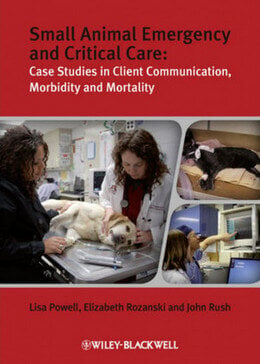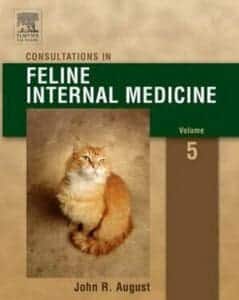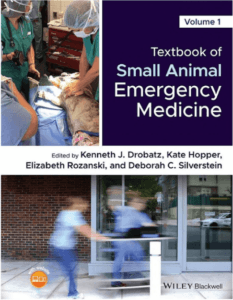Contributor list.
Preface.
Part One: Medical and Treatment Errors.
1. Coming Up for Air: When equipment failure can be fatal.
2. Alistair and the UTI: Sometimes antibiotics ARE indicated!
3. Double-Check the RX: How a simple math error cost a dog his life.
4. Holey Chest Tube!: How some inadvertent complications led to a change in standard operating procedure.
5. Count Your Sponges: A simple procedure can sometimes result in disaster.
6. First Off, Do No Harm: Always check tube placement, by many methods!
7. Right is Wrong: An example of a tragic outcome due to unmarked radiographs.
8. Sabrina the Good Witch: The importance of using the correct syringe.
9. Friends in High Places: An illustration of how imperative it is to correctly prepare and administer medications.
10. Midnight: A case describing the consequences of technical complications.
11. Sam and the Muscle Medicine: When you should listen to your gut and not your clients’ wishes.
12. A Shot in the Dark: The importance of discussing all potential complications prior to performing the procedure.
Part Two: Medical Judgment Errors.
13. Another Down Dog: Sometimes things are not as they seem!
14. It HAS to Be Blasto!: Surprise endings.
15. Can You Tap that Cat for Me?: Complications of common procedures.
16. Chief’s Complaint: Always suggest further diagnostics, and consider all differential diagnoses in a patient.
17. But He’s Been Fine!: The importance of assessing thoracic radiographs in patients experiencing blunt force trauma.
18. Would You Like Water with That? A Tale of Two Dogs: The dangers of hypernatremia!
19. The Great Pretender: ALWAYS consider hypoadrenocorticism as a differential diagnosis in dogs with nonspecific symptoms
20. A Lack of Concentration: Another example of how Addison’s disease can masquerade as a disease with a much worse prognosis.
21. Unlucky Lady: Remember to consider ALL possible differentials for your patient!
22. But She Has Heart Disease!: All aspects of a patient’s history should be carefully considered when presenting for an illness.
23. Pennies From Heaven: ALWAYS perform abdominal radiographs in patients presenting with signs of immune-mediated hemolytic anemia!
24. Seeing Red!: All ocular abnormalities should be examined promptly and completely, as irreversible disease may be present.
25. Sepsis the Next Day: An illustration of the importance of analyzing effusions yourself if the results will not be reported the same day, and to ALWAYS look under the tongue of a vomiting cat!
26. Anxious to Breathe: Care must be taken when performing diagnostics on brachycephalic, apprehensive dogs.
27. The Lost Acorn: A complicated case gets more perplexing!
28. The Lost Puppies: How the inexperience of a junior veterinarian caused the demise of two puppies.
29. Don’t Be Too Cavalier: A full abdominal exploratory should always be performed during an abdominal surgical procedure.
30. Too Much Sugar: All causes, pulmonary and extrapulmonary, should be investigated in patients with respiratory distress.
31. Tyler: Dehiscence of enterotomy sites should always be considered as a cause of illness in the 3–5 days following the operative procedure.
32. Whiskers: Immunosuppression from administered medications can result in the development of secondary infections.
33. Would You Like Some Salt?: The importance of monitoring fluid therapy.
34. Bambi?: Things to think about when coming into contact with wild animals.
35. The Big C: The dangers of making a pathologic diagnosis without obtaining a biopsy.
36. To Stent or Not to Stent: New technology isn’t always the answer.
37. It Isn’t Asthma?: Noting when it is important to look past the suspected client situation and focus on the patient.
38. Hoping History Doesn’t Repeat: An Illustration of the importance of good history taking.
Part Three: Lessons in Client Communication.
39. Not All Albumins are Equal: When transfusing nonautologous fluids, possible allergic reactions should always be considered and discussed with the client prior to administration.
40. Believing the Client: Listen to the client! They know their pets the best!
41. But I Thought He Would Be Fine?: The importance of communication about prognosis and risk—junior clinician errors.
42. If It’s Not in the Medical Record, Did It Happen?: The importance of a medical director addressing any and all client concerns.
43. Hemangiosarcoma is Bad: Failure to completely evaluate patients can result in a misdiagnosis.
44. The Internet Can Be a Dangerous Thing: One must take into consideration the availability of information on the internet, whether it be true or not, when discussing disease diagnosis and treatment.
45. Is there Some “Wiggle” Room?: An illustration of how essential it is to offer a variety of options to clients.
46. But CPCR Was Successful!: Clear, timely communication about changes in patient status.
47. Rosie and the Platelets: Novel therapies require a firm discussion of risk and benefit.
48. The Receptionist’s Dog: Family and friends’ pets can be particularly stressful for clinicians.
49. We’ll Take Good Care of Maxwell!: Unexpected deterioration of a pet after admission.
50. A Diagnosis to Stand By: A case highlighting why things are not always as they seem.
51. The Confused Setter: Making sure that all presenting clinical complaints are addressed.
52. Tasty Fungi: Working within financial constraints when the disease and prognosis are unknown.
53. Watch What You Write!: A lesson on how to always be professional
54. But She was just Vomiting!: The importance of organization in the midst of chaos.
55. Peroxide Puppy: A case discussing the potential concerns of phone advice.
56. Too Tight!: An illustration of possible complications associated with bandage placement.
57. What Was That Popping Sound?: What to do when a routine procedure goes wrong.
Part Four: Communication Issues between Colleagues and Hospital Staff.
58. Bandit: A case documenting stresses around the holidays, and illustrating different clinical approaches.
59. Check the Medicines: A case describing a very busy day, with an inadvertent distribution of the wrong medications.
60. Cricket and the Insidious Radiograph: Understanding the right and wrong ways to teach and learn.
61. Go Team!: Highlighting the role of experienced technicians in management of cases.
62. Not Just Another Blocked Cat: Outlining conflict between client cost constraints and clinician wishes.
63. Whose Fault?: Highlighting communication between a primary care hospital and an emergency clinic.
64. Shelby and the Needles: What to do when a situation has changed dramatically since the last physical examination.
65. Slow and Easy: The problems of “selling” an unfamiliar procedure to a client.
66. The Bandage: An example of noncollegial behavior.
67. We’ll See What the Blood Work Shows: The importance of timely client communication.
68. What Antibiotic is Best?: Highlighting communication issues between senior veterinary clinicians.
69. Molly and the Chicken Bone: A case outlining the importance of reevaluating patients referred for a second opinion.
70. Know the Nodes: Why physical examination is so important.
71. Nancy’s Neck Pain: A case outlining why a specialist may be helpful.
Appendix: How to Set Up Your Own Morbidity and Mortality Conference.
Index.














![Ettinger’s Textbook of Veterinary Internal Medicine 9th Edition [PDF+Videos] Ettinger’s Textbook of Veterinary Internal Medicine 9th Edition [True PDF+Videos]](https://www.vet-ebooks.com/wp-content/uploads/2024/10/ettingers-textbook-of-veterinary-internal-medicine-9th-edition-100x70.jpg)

![Textbook of Veterinary Diagnostic Radiology 8th Edition [PDF+Videos+Quizzes] Thrall’s Textbook of Veterinary Diagnostic Radiology, 8th edition PDF](https://www.vet-ebooks.com/wp-content/uploads/2019/09/textbook-of-veterinary-diagnostic-radiology-8th-edition-100x70.jpg)






